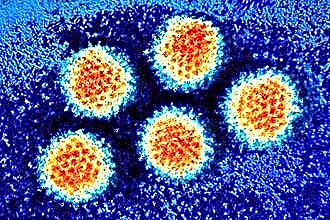Any woman in her life is forced to face a period in which the reproductive system becomes ineffective. In medical terminology, this phenomenon is called menopause. Its occurrence occurs in all women at different ages. This manifestation is due to the fact that the body has a certain number of eggs, which eventually disappear. Accordingly, a woman ceases to be capable of childbearing, along with this, menstrual cycles also stop. The body begins to rebuild, hormones change, which affects the entire body as a whole. Blood pressure and menopause are often closely related.
In the period before the onset of menopause, blood pressure indicators decrease, and after passing this milestone, they become elevated.  Increased pressure during menopause may be associated with the following:
Increased pressure during menopause may be associated with the following:
- Treatment with hormonal drugs.
- Being overweight.
- Increased sensitivity of the body to salty foods and foods.
- Decreased production of estrogen and progesterone.
- Increased vascular resistance.
- Retention of salts with an excess of sodium ions in the body, as a result of which the blood volume increases.
- Instability to stressful situations, excessive emotionality.
Important: pressure surges may not be associated with menopause, but with the presence of a tumor of the adrenal glands, respectively, before starting treatment, it is necessary to undergo a full medical examination to identify the exact cause.
Signs and symptoms of hypertension with menopause
An insufficient amount of hormones in a woman's body affects blood pressure indicators. According to the following manifestations, it can be determined that blood pressure and menopause have a connection:
- During hot flashes, blood flow increases. Such periods are accompanied by nausea, dizziness, fever, lack of air (it becomes difficult to breathe). Accordingly, there is a failure in the activity of the vegetative-vascular system, which can cause changes in blood pressure indicators.
- Emotionally imbalanced. More women have a hard time tolerating menopause, for this reason, frequent mood swings can be observed. A woman's emotional state becomes vulnerable, and even the smallest detail can cause strong feelings. Tearfulness can change in a minute to anger, depression, irritability. Such a manifestation in the body cannot pass without consequences. Unstable emotional behavior and depression are the main reasons why there are problems with the vascular system, accompanied by an increase in blood pressure.
- Sleepless nights. With menopause, women become nervous, the level of sweating increases, nocturia is observed (urination, mainly at night), which interferes with normal sleep at night. Sleep becomes sensitive and more superficial than deep. Inadequate rest is often the cause of "surges" in blood pressure indicators.
- Excess weight is often associated with metabolic disorders that occur during menopause. Weight begins to increase even with a slight deviation from proper nutrition. In this case, the load on the heart and blood vessels increases, they are forced to start functioning in an increased mode, which affects the pressure indicator.
These symptoms can be suppressed with hormonal drugs, but uncontrolled drug use can cause new health problems.
Important: it is contraindicated to engage in self-treatment with hormonal agents, since improper use contributes to the thickening of the blood, and the vessels become clogged.
Hypertension with menopause can develop even in women who have not previously encountered a similar problem. For this reason, experts recommend that you familiarize yourself with the list of symptoms in advance, so that you can notice the development of the disease in time.
Symptoms:
- Frequent, severe headaches.
- Hot flashes with fever and feeling unwell.
- The heart often begins to beat faster.
- Sudden changes in mood.
- Frequent urination is observed.
Duration of menopause and hypertension
Women are often interested in the question of how long menopause lasts, accompanied by a high blood pressure. There is no single answer. According to medical statistics, 60% of women, 2 years after the last menstrual period, have hot flashes, climacteric depression, high blood pressure and other symptoms.
The duration of menopause directly depends on the general state of health, the quality and regularity of nutrition and treatment, and the characteristics of the organism. Very rarely, women manage to avoid menopause, and for some, the duration is no more than 14 days.
Hot flashes, which are more likely to cause an increase in pressure than all other symptoms of menopause, last an average of 30 seconds to 3-5 minutes.
Treatment of hypertension with menopause
Many believe that if the body lacks hormones, then, accordingly, it is necessary to replenish the level of their content with the help of drugs. But it is possible to use hormonal drugs for the treatment of menopause only under the supervision of a doctor and with extreme caution, since the use of hormones with a high rate can lead to serious complications.
Basically, if there are pressure surges during menopause, treatment is carried out with drugs used for hypertension. But you should not buy medicines without consulting your doctor. In most cases, it is possible to choose the means that are more appropriate and safer to use. Hypertension with menopause can be treated with one drug or in combination.
Nutrition
 The general condition of a woman with menopause has a direct interaction with nutrition, for this reason, before starting treatment, you should completely revise your diet. Women who need to normalize their blood pressure should add more vegetables and fruits to their diet (preference should be given to fresh species), and foods high in fat and salt should be excluded, or at least consumed in minimal quantities. It is recommended to use confectionery products as rarely as possible. Hypertension and bad habits are incompatible, therefore, it is necessary to give up tobacco products and drinks with alcohol content.
The general condition of a woman with menopause has a direct interaction with nutrition, for this reason, before starting treatment, you should completely revise your diet. Women who need to normalize their blood pressure should add more vegetables and fruits to their diet (preference should be given to fresh species), and foods high in fat and salt should be excluded, or at least consumed in minimal quantities. It is recommended to use confectionery products as rarely as possible. Hypertension and bad habits are incompatible, therefore, it is necessary to give up tobacco products and drinks with alcohol content.
Compliance with even such simple rules will help a woman to alleviate the condition of hypertension and menopause.
Medicines
Menopause pressure in women can often require treatment with medication. For therapy, the doctor may prescribe the following medications:
Group | Description | Name of drugs |
|---|---|---|
| Phytoestrogens | The drugs are similar to estrogen hormones. Produced from plants that contain the hormone estrogen. The main advantage of treatment with drugs of this group is that absolutely no harm is done to the female body. There are practically no contraindications to use. | Often prescribed drugs for menopause are "Proginova" and "Klimonorm". |
| Homeopathic remedies | Drugs in this group are more often prescribed if hormonal medications are contraindicated.Medicines help establish control over hot flashes, sweating. They normalize the psychological state, which leads to the stabilization of emotions. Promote the improvement of blood vessels. Also, the drug can be used for prophylactic purposes in the formation of blood clots. | The following drugs are very popular: Klimadinon, Remens. |
| Sedatives | Used to calm the nervous system, reduce pain, eliminate spasms. | Valerian, Motherwort, Bromides. |
| Pacemakers and diuretics | The drugs are prescribed only together. Their action is aimed at increasing the effectiveness of drugs from other groups. | Most prescribe 2 drugs of these groups: "Biprolol", "Retard". |
Important: if, in addition to high blood pressure, severe headaches, visual impairment (visibility is blurred, darkening, etc.), loss of orientation, coordination are noted, then you must immediately call a doctor, because there is a high likelihood of a hypertensive crisis, stroke or heart attack.
Aerobics
Medication will be more effective if you do aerobic exercise at the same time. It is recommended to exercise regularly, but observe  permissible load, which can be gradually increased. Menopause pressure in women can be normalized by doing the following sports:
permissible load, which can be gradually increased. Menopause pressure in women can be normalized by doing the following sports:
- Running, walking.
- Skiing.
- Skating.
- Swimming.
- Dancing.
- Fitness and other sports that do not require strenuous physical activity.
It is recommended to give preference to the type that suits your liking more, because in the majority it is the emotional mood that is important.
Folk remedies
Supporters of alternative medicine try not to resort to the use of medicines and carry out treatment with folk remedies, among which there are a large number of recipes and remedies in order to treat high blood pressure with menopause.
Hawthorn
To stabilize the emotional state, fight insomnia and other symptoms of menopause, an infusion of hawthorn berries and flowers is used.
Preparation: take 1 teaspoon of flowers and berries of the plant, pour one glass of boiling water and leave to infuse for about 20 minutes. Should be taken ½ cup three times a day before meals.
For greater effectiveness, you can add chamomile, motherwort and other herbs that have a sedative effect to the infusion.
Sage
 To stabilize the pressure, sage can be used in the form of freshly squeezed juice from the stems and leaves. The juice should be consumed 3 times a day, 2 tablespoons.
To stabilize the pressure, sage can be used in the form of freshly squeezed juice from the stems and leaves. The juice should be consumed 3 times a day, 2 tablespoons.
If pressure surges are observed during menopause, treatment with sage infusion will be no less effective than the juice of this plant. To prepare the infusion, you will need to mix in equal proportions valerian root, lemon balm, sage and horsetail. Pour 1 tablespoon of the herbal mixture into a glass and pour boiling water over it, leave for 20-25 minutes, drain. The resulting amount of infusion should be divided into 3 doses during the day.
Sage tea, which can be purchased at almost any store, is no less popular.
Control of well-being
When using any type of treatment or complex of therapy, it is necessary to monitor the general state of health, pressure indicators. In order to obtain correct measurement results, the following conditions must be met:
- At least 5 minutes before measuring the indicators, stop doing physical labor and exclude other loads.
- Sit in a comfortable position.
- Fasten the tonometer cuff about 2 centimeters above the bend of the elbow joint.
- Measure the pressure indicator 3 times a day: morning, afternoon, evening.
For a more visual control, it is recommended to draw up a table in which you can note the following:
- Pressure indicator (number, morning, afternoon, evening; left hand, right hand).
- With what frequency the heart beats (morning, afternoon, evening).
- General health and well-being.
Such a table will help to visually see changes in health status, monitor indicators.
Comprehensive treatment, proper nutrition and self-control will help women to quickly cope with the disease and return to normal life without stress, poor health, frequent urination and other symptoms of menopause.



